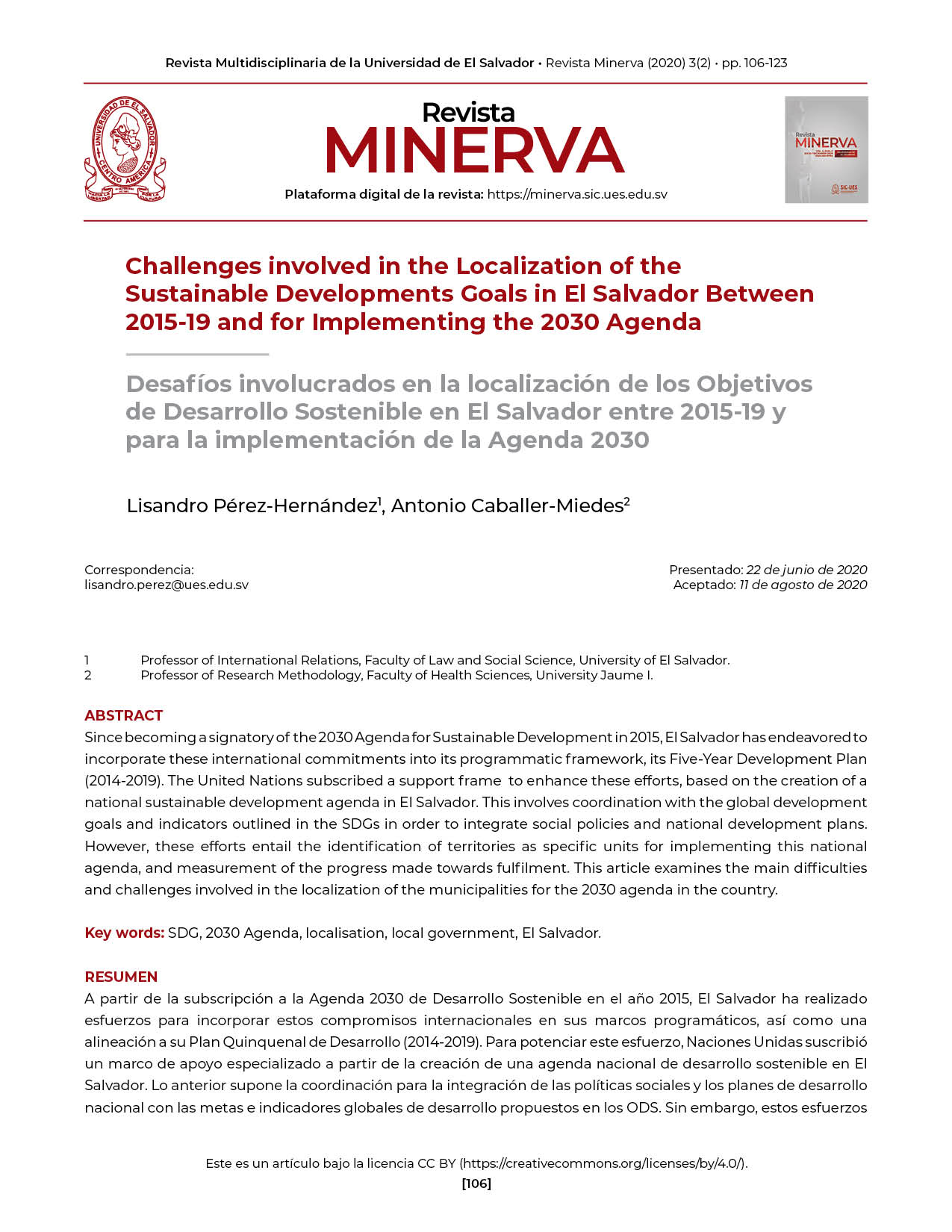Abstract
Since becoming a signatory of the 2030 Agenda for Sustainable Development in 2015, El Salvador has endeavored to incorporate these international commitments into its programmatic framework, its Five-Year Development Plan (2014-2019). The United Nations subscribed a support frame to enhance these efforts, based on the creation of a national sustainable development agenda in El Salvador. This involves coordination with the global development goals and indicators outlined in the SDGs in order to integrate social policies and national development plans. However, these efforts entail the identification of territories as specific units for implementing this national agenda, and measurement of the progress made towards fulfilment. This article examines the main difficulties and challenges involved in the localization of the municipalities for the 2030 agenda in the country.

This work is licensed under a Creative Commons Attribution 4.0 International License.
Copyright (c) 2020 Authors who publish in Revista Minerva agree to the following terms: Authors continue as owners of their work, assigning only dissemination rights to Minerva Magazine under the standards of the Creative Commons Attribution 4.0 International License (CC BY 4.0). This license allows others to mix, adapt and build upon the work for any purpose, including commercially, and although new works must also acknowledge the initial author, they do not have to license derivative works under the same terms.





